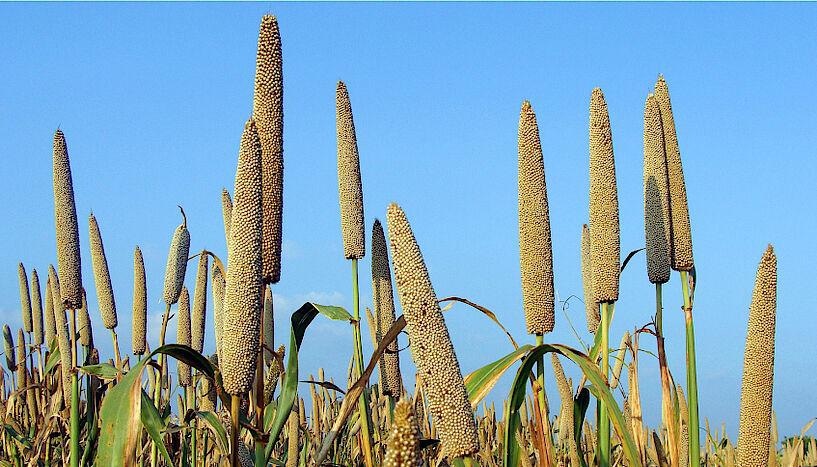Jan 21 2021
In recent years, agriculture and climate experts have been warning that extreme climate events such as severe droughts with frequent heatwaves reduce the production of significant staple food crops like wheat, posing a severe threat to food security.
 Pearl millet is a cereal crop that contains better nutrients than wheat while also being more resilient to climate stressors. Image Credit: © Pixabay.
Pearl millet is a cereal crop that contains better nutrients than wheat while also being more resilient to climate stressors. Image Credit: © Pixabay.
Hence, researchers have been analyzing grains with the ability to better adapt to such circumstances: Headed by Wolfram Weckwerth from the University of Vienna, an international group of researchers has performed physiological and molecular comparisons of wheat with pearl millet under drought stress.
The study, which explains how pearl millet can thrive in this looming climate change chaos better than wheat, has been published in the Plant Science journal.
Pearl millet is an essential cereal crop containing same or even better nutrients as wheat with higher amounts of Zinc and Iron.
Wolfram Weckwerth, Department of Functional and Evolutionary Ecology, University of Vienna
In his lab for Molecular Systems Biology (MOSYS) at the Vienna Metabolomics Center (VIME) of the University of Vienna, he closely analyzed the crops’ excellent resilience to drought and heat stress, in collaboration with an international group from the University of Oviedo (Spain), the National Institute of Biology, Ljubljana (Slovenia), IROST Tehran (Iran), and CEGSB team ICRISAT (India).
“However, it is an under-utilized crop, despite it’s remarkable characteristics,” added Weckwerth.
Water resources are the crucial parameter in terms of resilience to climate stressors, together with heat, specifically under long drought periods. Moreover, an increase in biodiversity in agriculture would improve the resilience of agricultural processes to such drastic climate changes.
Pearl millet is such a well-deserved alternative which can provide nutrition without the requirement of too much water and a much higher resistance to heat and drought compared to wheat, rice and maize. Research programs and political efforts are necessary to making these underutilized crops available compared to a focus on only three to four major staple food crops in the world, in order to ensure food security.
Wolfram Weckwerth, Department of Functional and Evolutionary Ecology, University of Vienna
Pearl Millet as Smart Crop
“Almost 40% of our daily calories are dependent on three cereals (wheat, rice and maize) which requires more resources than pearl millet,” explained Palak Chaturvedi, co-leader of the study. “It is the time to see for a climate smart crop, and pearl millet has full capacity and nutritional property to be termed as smart crop.”
As part of the study, Chaturvedi and the team have explained processes of resilience to drought stress for pearl millet. This information can be applied to breed increasingly drought-tolerant lines in both wheat and pearl millet.
Moreover, the study offers a comparative view on C3 and C4 photosynthetic proteins, stay green and senescence proteins, and wax biosynthetic proteins that are crucial to thriving under severe climatic conditions.
Arindam Ghatak, the first author of the study, reiterates the significance of the other molecular analysis in the flow of central dogma (i.e. proteins, metabolites, and RNA) and their correlation with the physiological characteristic. He elucidates that genome-based aided breeding can only cover 30%–40% of phenotypic variance based on the latest GWAS studies.
There are many processes which are not predictable by genome information, especially protein translation and activity, which is crucial for phenotypic responses and survival of the plants under severe stresses.
Arindam Ghatak, Department of Functional and Evolutionary Ecology, University of Vienna
Journal Reference:
Ghatak, A., et al. (2021) Physiological and Proteomic Signatures Reveal Mechanisms of Superior Drought Resilience in Pearl Millet Compared to Wheat. Plant Science. doi.org/10.3389/fpls.2020.600278.